In the quest to combat echinococcosis, a parasitic infection caused by tapeworms, various key measures and strategies have been developed. This article aims to shed light on the importance of prevention in minimizing the spread of echinococcosis and protecting public health. By raising awareness about the disease, advocating for improved hygiene practices, implementing regular deworming programs for domestic animals, and promoting community education, we can pave the way for a future free from the burden of echinococcosis. Join us as we explore the key measures and strategies that can make a significant difference in preventing this potentially life-threatening disease.
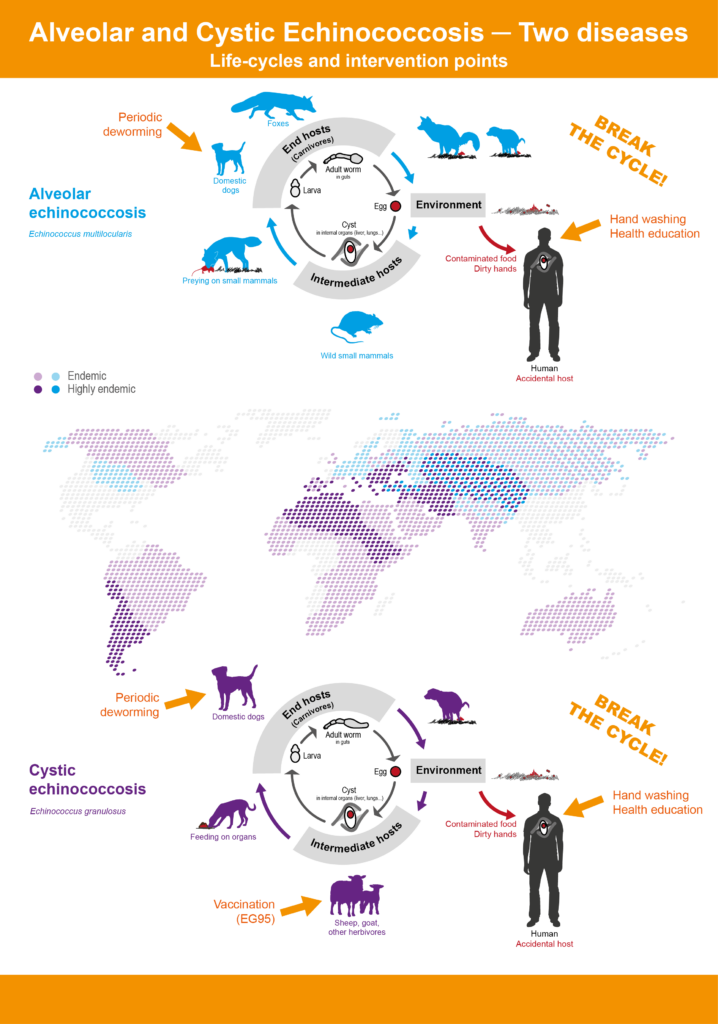
Overview of Echinococcosis
Echinococcosis is a parasitic disease caused by the infection of tapeworms from the genus Echinococcus. These tapeworms primarily infect mammals, including humans and animals such as dogs, livestock, and wild animals. The infection is commonly transmitted through the ingestion of tapeworm eggs present in contaminated food or water, primarily from animal feces.
Definition of Echinococcosis
Echinococcosis, also known as hydatid disease or cystic echinococcosis, is a zoonotic disease caused by the larval stage of tapeworms belonging to the Echinococcus genus. The disease is characterized by the formation of cysts in various organs, most commonly the liver and lungs. These cysts contain the tapeworm larvae, which can cause serious health complications, including organ damage and even death if left untreated.
Types of Echinococcosis
There are two main types of echinococcosis: cystic echinococcosis (CE) and alveolar echinococcosis (AE).
Cystic Echinococcosis (CE) is the more common form of the disease, accounting for approximately 95% of cases worldwide. CE primarily affects the liver and lungs but can also affect other organs. The formation of large cysts within these organs can lead to symptoms such as abdominal pain, jaundice, cough, and chest pain.
Alveolar Echinococcosis (AE) is the less common but more severe form of the disease. AE is caused by the larval stage of the Echinococcus multilocularis tapeworm. Unlike CE, AE does not form large cysts but instead infiltrates surrounding tissues, resulting in the formation of tumor-like lesions. AE primarily affects the liver but can also spread to other organs such as the brain. The symptoms of AE are often nonspecific and can vary depending on the affected organ.
Global Burden of Echinococcosis
Echinococcosis has a significant global burden, with millions of people affected worldwide. The World Health Organization (WHO) estimates that over 1 million disability-adjusted life years (DALYs) are lost annually due to echinococcosis. The disease is endemic in many parts of the world, particularly in regions where close contact between humans and animals is common, and proper hygiene practices may be lacking. Echinococcosis is more prevalent in rural and agricultural communities, where livestock rearing and inadequate waste management practices contribute to the transmission of the disease.
Risk Factors for Echinococcosis
Several factors contribute to the risk of acquiring echinococcosis. Understanding these risk factors is crucial in developing effective prevention strategies.
Geographical Location
Geographical location plays a significant role in the prevalence of echinococcosis. The disease is more commonly found in certain countries and regions, particularly in areas with a high concentration of livestock farming and poor sanitation practices. These regions include Central Asia, China, parts of Africa, South America, and certain areas of Eastern Europe.
Exposure to Infected Animals
Close contact with infected animals, particularly dogs and livestock, is a major risk factor for echinococcosis. Dogs are the primary hosts for Echinococcus granulosus, the tapeworm species that causes most human cases of CE. Livestock, such as sheep and cattle, can become infected with tapeworm eggs through grazing on contaminated pastures or consuming contaminated water sources. Humans can then contract the disease through direct contact with infected animals or by consuming raw or undercooked meat from infected animals.
Occupational Hazards
Certain occupations, such as animal husbandry, veterinary work, and farming, can increase the risk of echinococcosis. Workers in these professions may have regular contact with infected animals or come into contact with contaminated environments. Without proper protective measures, such as wearing gloves and practicing good personal hygiene, the risk of transmission is significantly higher.
Poor Hygiene Practices
Inadequate personal hygiene, especially handwashing, is a risk factor for echinococcosis. The disease is primarily transmitted through the ingestion of tapeworm eggs, which can easily contaminate hands, food, and water sources. Poor sanitation and lack of access to clean water contribute to the spread of the disease, particularly in resource-limited settings.
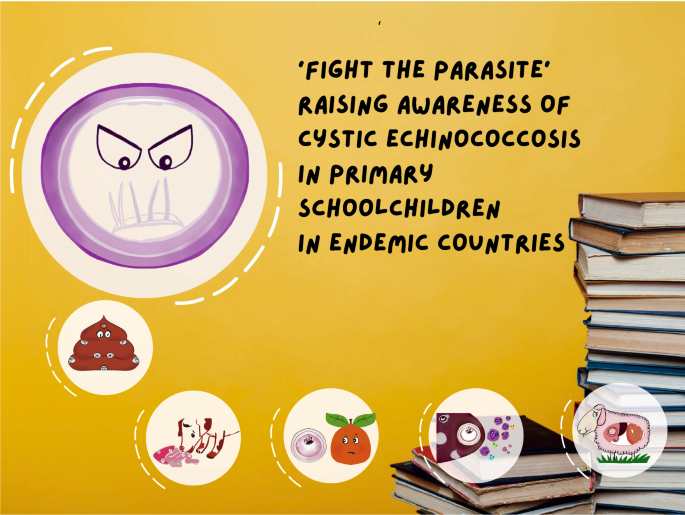
Preventive Measures for Echinococcosis in Humans
Preventing echinococcosis in humans involves a combination of educational campaigns, hygiene practices, and regular deworming efforts. Implementing these preventive measures can significantly reduce the risk of transmission and the burden of the disease.
Educating Communities
Public education plays a crucial role in raising awareness about echinococcosis and its transmission. Community-based educational campaigns can help disseminate information on the disease, its symptoms, and preventive measures. This can be done through schools, community centers, and healthcare facilities. Education should focus on transmission routes, the importance of personal hygiene, and safe handling practices when in contact with animals.
Promoting Personal Hygiene
Improving personal hygiene practices, especially hand hygiene, is essential in preventing echinococcosis. Proper handwashing with soap and clean water should be emphasized, particularly after handling animals, before consuming food, and after coming into contact with potentially contaminated surfaces. Education on proper hand hygiene techniques should be provided to individuals of all ages.
Regular Deworming
Regular deworming, especially of high-risk individuals and communities, can help reduce the burden of echinococcosis. Deworming medications can effectively kill the tapeworms and prevent further transmission. Deworming efforts should be coordinated with healthcare professionals and targeted towards communities with a high prevalence of the disease.
Safe Handling of Animals
Practicing safe handling techniques when in contact with animals, particularly dogs and livestock, is crucial for echinococcosis prevention. This includes wearing gloves when handling feces or contaminated materials, washing hands thoroughly after contact with animals, and avoiding direct contact with stray dogs or wild animals. It is also important to teach children about the risks associated with handling animals and to supervise their interactions.
Effective Waste Management
Improving waste management practices can significantly reduce the risk of echinococcosis transmission. Proper disposal of animal feces, particularly in areas where dogs are common, is essential in preventing contamination of the environment. Communities should establish systems for the collection and safe disposal of animal waste, ensuring that it does not contaminate water sources or come into contact with human populations.
Preventive Measures for Echinococcosis in Animals
Preventing echinococcosis in animals is crucial for reducing the overall burden of the disease and preventing transmission to humans. Several preventive measures can be implemented in animal populations to minimize the risk of infection.
Vaccination of Livestock
Vaccinating livestock, such as sheep and cattle, can help prevent echinococcosis. Vaccines target the tapeworm larvae in the animals, reducing the number of reinfections and ultimately decreasing the transmission to humans. Vaccination programs should be implemented in high-risk areas and integrated with other control strategies.
Proper Animal Husbandry Practices
Implementing proper animal husbandry practices can minimize the risk of echinococcosis in livestock. This includes providing clean and hygienic living conditions, regular deworming of animals, and appropriate disposal of contaminated animal waste. Quarantine measures should also be enforced when introducing new animals into a herd or flock.
Regular Veterinary Check-ups
Routine veterinary check-ups are essential in detecting and treating echinococcosis in animals. Regular monitoring of livestock can help identify infected animals and implement control measures promptly. Veterinarians should be trained in recognizing the signs of the disease and providing appropriate treatment.
Avoiding Free Roaming of Dogs
Controlling the population and movement of dogs is crucial in preventing echinococcosis. Free-roaming dogs are more likely to come into contact with infected animals and environments, increasing the risk of transmission. Implementing responsible dog ownership practices, such as confinement, vaccination, and regular deworming, can help reduce the spread of the disease.
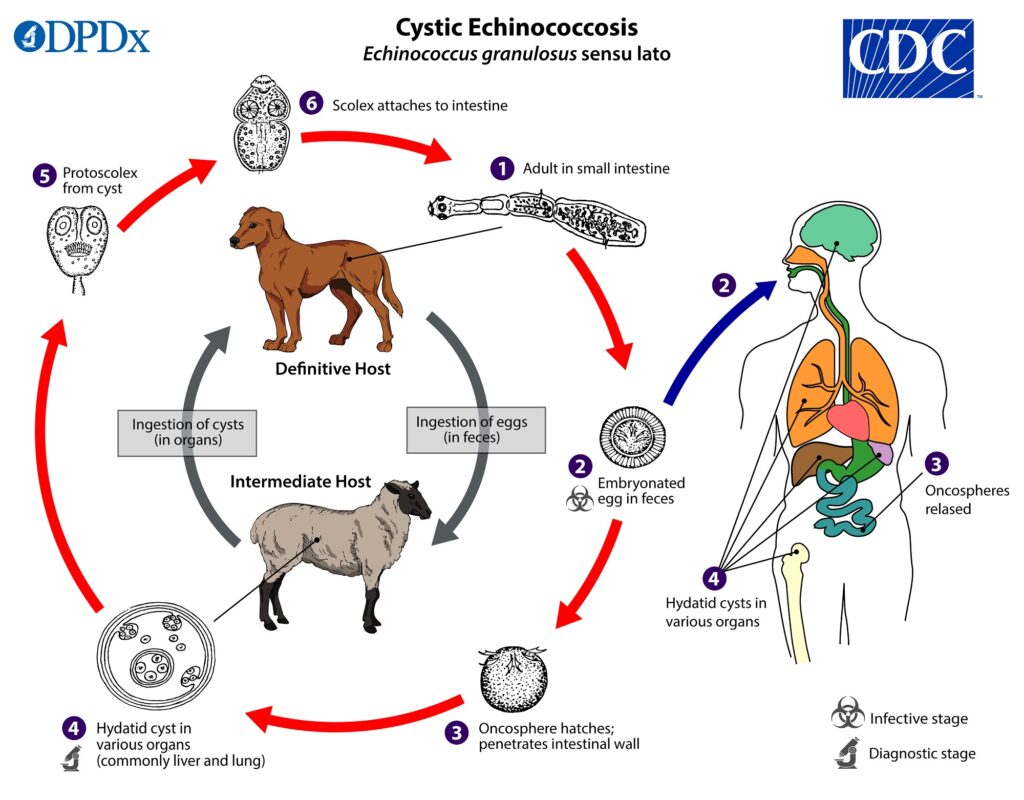
Control Strategies for Echinococcosis
Controlling echinococcosis requires a multidimensional approach that encompasses surveillance, early detection, treatment, and community engagement. Implementing effective control strategies can help reduce the burden of the disease and prevent further transmission.
Surveillance and Monitoring
Establishing surveillance programs for echinococcosis is essential in tracking the prevalence and geographical distribution of the disease. Monitoring the disease burden can help identify high-risk areas and populations, allowing for targeted control measures. Surveillance should involve regular testing of human and animal populations, as well as environmental sampling.
Early Detection and Diagnosis
Early detection and diagnosis of echinococcosis are crucial for prompt treatment and preventing complications. Development and implementation of diagnostic tools that are sensitive, specific, and easily accessible are necessary. Healthcare personnel should be trained in recognizing the symptoms and signs of the disease, and diagnostic services should be readily available in endemic areas.
Prompt Treatment and Follow-up
Timely treatment and follow-up care are essential components of echinococcosis control. Treatment usually involves a combination of surgery and antiparasitic medication. Ensuring access to quality healthcare facilities and trained healthcare professionals is necessary for effective treatment. Follow-up care is crucial to monitor treatment response and detect potential recurrence of the disease.
Vector Control
Targeting the intermediate hosts of the tapeworm, such as rodents, can help reduce the transmission of echinococcosis. Implementing vector control measures, such as rodent control programs and environmental modifications to minimize the presence of intermediate hosts, can contribute to disease control efforts.
Community Engagement and Collaboration
Engaging communities in echinococcosis control programs is essential for their success. This involves raising awareness, encouraging active participation, and addressing cultural beliefs and practices that may contribute to the spread of the disease. Collaboration among various stakeholders, including healthcare professionals, veterinary authorities, environmental agencies, and community leaders, is necessary for a coordinated and effective approach to prevention and control.
One Health Approach to Echinococcosis Prevention
Adopting a One Health approach is crucial in addressing the complex nature of echinococcosis and its transmission between humans and animals. This integrated approach emphasizes the interconnectedness of human, animal, and environmental health in preventing and controlling the disease.
Interdisciplinary Collaboration
Collaboration and integration between various disciplines, including human health, veterinary medicine, and environmental sciences, is key to a One Health approach. Establishing interdisciplinary teams and collaborative platforms can facilitate the exchange of knowledge, joint decision-making, and the development of comprehensive prevention strategies.
Integration of Human and Animal Health Systems
Integrating human and animal health systems is essential in detecting and preventing zoonotic diseases like echinococcosis. Sharing data, diagnostic tools, and surveillance systems between human and animal health sectors can lead to early detection and coordinated response. This integration can also help identify common risk factors and develop joint prevention strategies.
Risk Communication and Education
Effective risk communication and education are cornerstones of a One Health approach. Engaging with communities, healthcare professionals, veterinary workers, and other relevant stakeholders is crucial in disseminating accurate information about echinococcosis, its transmission, and prevention. Tailoring communication strategies to the target audience and addressing cultural beliefs can enhance the effectiveness of prevention efforts.
Research and Innovation
Promoting research and innovation in echinococcosis prevention is essential for developing new tools, technologies, and strategies. Investing in research can lead to improvements in diagnostic methods, treatment options, and control measures. The integration of innovative technologies, such as molecular diagnostics and geographic information systems (GIS), can enhance surveillance and monitoring efforts.
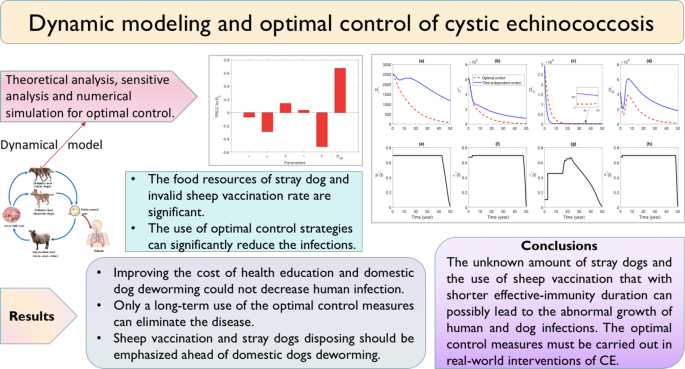
Economic Impacts of Echinococcosis
Echinococcosis imposes significant economic burdens on both individuals and communities. The financial costs associated with healthcare, lost productivity, and the impacts on the livestock industry can have far-reaching consequences.
Healthcare Costs
The treatment of echinococcosis, particularly the surgical interventions required for advanced cases, can be costly. The expenses associated with hospitalization, diagnostic tests, medications, and follow-up care can burden individuals and healthcare systems, particularly in resource-limited settings. The economic impact extends beyond the direct medical costs and includes the indirect costs related to transportation and loss of income during treatment.
Lost Productivity
Echinococcosis can result in long-term disability and loss of productivity among affected individuals. The disease can cause organ damage, impair physical and cognitive functions, and require extended periods of treatment and recovery. These health effects can limit an individual’s ability to work, resulting in decreased income and economic instability.
Impacts on Livestock Industry
Echinococcosis has significant implications for the livestock industry. Infected animals may experience reduced productivity, weight loss, and organ damage, leading to financial losses for farmers and livestock owners. In some cases, entire herds or flocks may need to be culled to prevent further transmission. The costs associated with disease control programs and implementing preventive measures can also impact the profitability of the livestock industry.
Tourism and Trade Effects
Echinococcosis can have indirect economic impacts on tourism and trade. Regions that are known to be endemic for the disease may experience a decline in tourism due to concerns about public health and safety. Additionally, trade restrictions can be imposed on regions with high echinococcosis prevalence, affecting the export of livestock and agricultural products.
Challenges in Echinococcosis Prevention
Several challenges hinder the effective prevention and control of echinococcosis. Addressing these challenges is crucial in developing comprehensive and sustainable prevention strategies.
Limited Awareness and Knowledge
Limited awareness and knowledge about echinococcosis pose significant challenges in prevention efforts. Many communities, particularly in rural and agricultural areas, have limited access to information about the disease, its transmission, and preventive measures. Raising awareness through targeted education campaigns and community engagement is necessary to overcome this challenge.
Limited Access to Healthcare
Limited access to quality healthcare services, particularly in remote and underserved areas, hinders the early detection and treatment of echinococcosis. Inadequate healthcare infrastructure, lack of trained healthcare professionals, and financial barriers can prevent individuals from seeking timely medical care. Strengthening healthcare systems and improving accessibility to diagnostic and treatment services are essential in overcoming this challenge.
Socioeconomic Factors
Socioeconomic factors, such as poverty, lack of education, and unemployment, contribute to the transmission and persistence of echinococcosis. Poverty limits access to clean water, sanitation facilities, and adequate housing, increasing the risk of disease transmission. Addressing underlying social determinants of health, such as poverty reduction, education, and employment opportunities, is crucial in preventing echinococcosis.
Inadequate Surveillance and Control Programs
Inadequate surveillance and control programs hinder the accurate assessment of disease burden and the implementation of effective prevention strategies. Limited resources, lack of trained personnel, and insufficient coordination between different sectors contribute to the gaps in surveillance and control. Strengthening surveillance systems, improving data collection and analysis, and enhancing collaboration among stakeholders are essential in addressing this challenge.
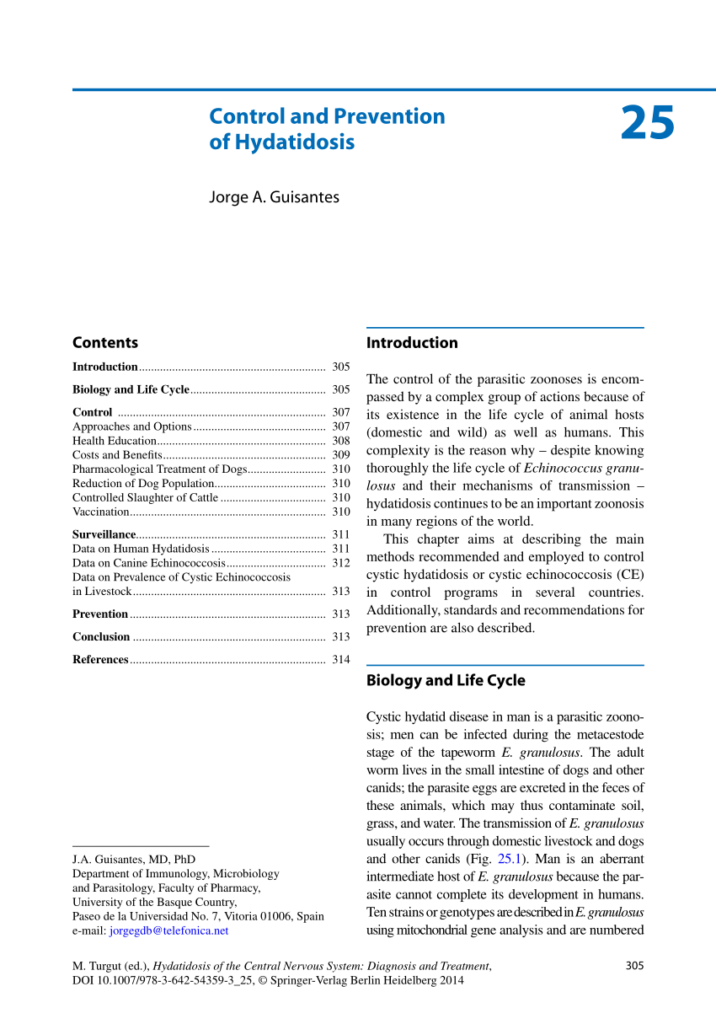
Success Stories in Echinococcosis Prevention
Despite the challenges, there have been success stories in the prevention and control of echinococcosis. These achievements are the result of sustained control programs, collaborative efforts, community participation, and early detection and intervention strategies.
Sustained Control Programs
Several countries and regions have implemented sustained control programs for echinococcosis, leading to significant reductions in disease prevalence. These programs focus on a comprehensive approach, including surveillance, education, veterinary interventions, and healthcare services. The success of these programs highlights the importance of long-term commitment and collaboration among various stakeholders.
Collaborative Efforts among Countries
International collaboration and sharing of knowledge and resources have been instrumental in preventing echinococcosis. Countries with high disease burden have worked together to implement joint control strategies, conduct research, and exchange experiences. Collaborative efforts have led to the development of regional control programs, standardization of diagnostic and treatment protocols, and improved surveillance systems.
Community Participation and Empowerment
Engaging communities in echinococcosis prevention programs has been a key factor in success stories. Empowering communities through education, raising awareness, and involving them in decision-making processes leads to increased compliance with preventive measures and sustained behavior change. Community participation promotes ownership and strengthens the overall effectiveness of prevention efforts.
Early Detection and Intervention
Early detection and intervention play a critical role in preventing the progression of echinococcosis and reducing the burden of the disease. Timely diagnosis, followed by prompt treatment and adherence to follow-up care, can prevent complications and improve treatment outcomes. Implementing surveillance systems, training healthcare professionals, and promoting early healthcare-seeking behavior are essential in achieving early detection and intervention.
Conclusion
Preventing and controlling echinococcosis requires a comprehensive and multidimensional approach. From educating communities to implementing targeted hygiene practices, regular deworming, and effective waste management, the prevention measures for echinococcosis in humans are diverse and interconnected. Similarly, in animals, vaccination, proper husbandry practices, regular veterinary check-ups, and controlling roaming dogs help minimize the risk of infection. The use of a One Health approach, involving interdisciplinary collaboration, integration of human and animal health systems, risk communication, and research and innovation, is crucial in addressing the complex nature of echinococcosis.
Echinococcosis imposes significant economic burdens on individuals and communities, highlighting the importance of prevention and control strategies. However, challenges such as limited awareness and knowledge, limited access to healthcare, socioeconomic factors, and inadequate surveillance and control programs hinder the effective prevention of the disease. Success stories in echinococcosis prevention, driven by sustained control programs, collaborative efforts among countries, community participation, and early detection and intervention, offer hope for reducing the burden of the disease.
To effectively combat echinococcosis, essential measures such as raising awareness, improving access to healthcare, addressing socioeconomic factors, and strengthening surveillance and control programs need to be prioritized. Adopting a One Health approach, which recognizes the interconnectedness of human, animal, and environmental health, is crucial in preventing and controlling echinococcosis effectively. By addressing the challenges and implementing comprehensive prevention strategies, the global burden of echinococcosis can be significantly reduced.